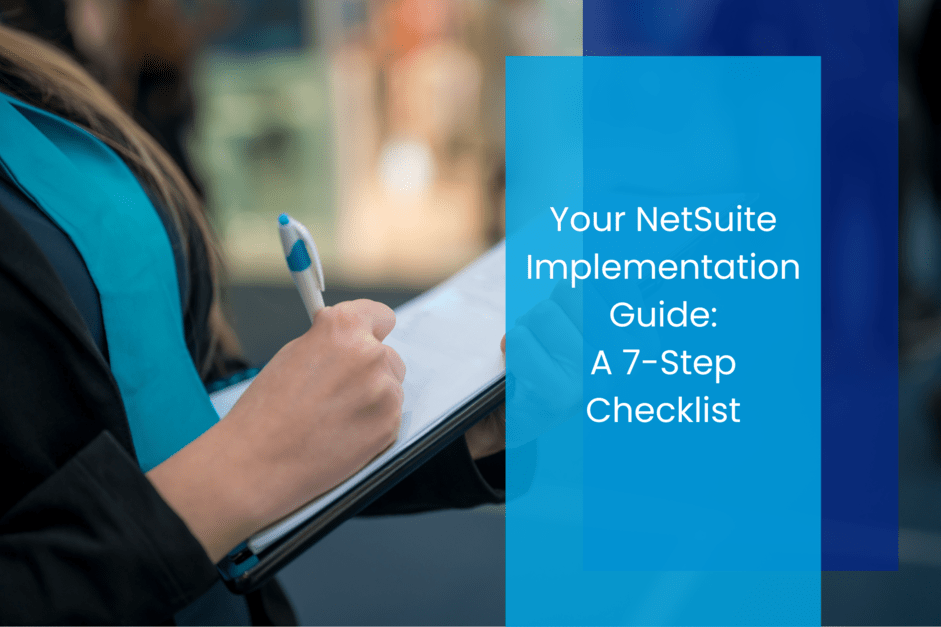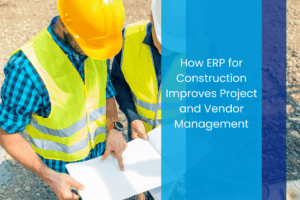What’s involved in a NetSuite ERP implementation? Let’s dive into this complete checklist that will give you all the details you need to know before connecting with a NetSuite implementation partner.
What to expect from kick-off to go-live and beyond:
-
- Requirements Gathering
- System and Customization Design
- System Configuration
- System Testing
- Training
- Deployment, Preparation, and Go-Live
- Support and Maintenance
Requirements Gathering for NetSuite Implementation
The first step is to discuss and lay out the business goals with your NetSuite implementation partners. What are you trying to solve? What are the ERP requirements of the various departments within the organization and the issues they have that they will need to address? A deep dive into the needs, along with the challenges and goals, is imperative to the discovery and assessment phase. Look at current workflows and processes and identify inefficiencies that can be addressed with NetSuite ERP.
Once you have identified the issues that need solving, clarifying which processes you’d like the ERP system to take responsibility for and the business goals the new system will need to support is next. It’s also vital to examine the current systems within the organization that are working or not working to help reach business goals and decide whether or not to keep them.
Part of the assessment process is to also identify the key stakeholders that will be involved in the implementation, including the leads of different departments. These stakeholders should be involved in this initial phase, as their input is invaluable. At this stage, it’s also time to identify what KPIs will need to be monitored, tracked, and optimized. At the end of this portion of the process, your team and NetSuite implementation partners should be able to clearly identify the objectives and results you expect to come out of deploying the new ERP.
Throughout the implementation process, ensuring that accurate and complete data is transferred to NetSuite is pivotal. Conducting a thorough check of current data and its integrity is critical, as well as identifying what needs to be moved. If data must be cleansed prior to migration, then organizations must complete this effort prior to any other step. Once data has been cleansed and validated and is free of errors and redundancies, developing a mapping strategy to align the old with the new system is necessary. Determining which data sets are necessary for operations should be prioritized for migration. Be sure that security and compliance measures are taken to protect any sensitive information during the data migration. Consider how the data will flow between systems after the migration and that these integration points are configured properly. Decide whether data will be migrated in phases or in one fell swoop based on needs and limitations.
Once all these determinations have been solidified, testing the migration process to identify issues before going live is essential. Validation of the data’s accuracy and the completion of the migration should be verified and reconciled. A backup and contingency plan should be implemented as well, in case of unexpected failures, and to address any risks or disruptions. All of these considerations should be taken into account to maximize the success of data migration into your new NetSuite ERP system.
System and Customization Design
After the discovery and assessment phase, a plan for customization should be next on the checklist. Customizations should be prioritized based on their impact on the business, availability of resources, and strategic significance. The focus should be on customizations that present the most value. Consideration for out-of-the-box functionality should be evaluated first, as those may already meet the needs of the organization without the need for customization. When considering customizations, scalability should be taken into account to ensure they’re flexible and can accommodate future growth without too much rework. Prior to deploying any customizations, thorough testing should be done to ensure they function properly.
System Configuration
This vital step in the ERP implementation process involves setting up items like language preferences, assigning user roles and permissions, and changing any default settings to meet the needs of the organization. Your partner will also help to optimize any database settings for performance, security, backup, and recovery. At this point, you may also integrate the ERP with other applications, depending on the various phases in which you agree. This stage also includes the implementation of any change management practices to minimize interruptions and manage any changes effectively.
System Testing
Evaluation and testing of your new NetSuite ERP’s functionality, performance, and reliability is to make sure it meets the needs of the organization. There are several types of tests to perform, including functional testing, which ensures that all works as intended. These can include data entry, transaction processing, and generating reports. Another phase involves testing the integrations with other applications to ensure that data smoothly flows from the ERP to the other systems. Performance testing, another phase, evaluates the responsiveness of the ERP, as well as its performance under different workloads. Testing the security is also vital to address any vulnerabilities and includes user authentication, data encryption, and more. You will also want to test the user interface and experience to ensure that layouts, navigation, and overall user satisfaction are up to par. Once this phase is completed, full deployment across the organization occurs.
Training
Training not only involves educating new employees on the system but also teaching those who will be training others. There should always be a set group of employees that will be responsible for training new employees on the system, so they need to be read in first. Multiple scheduled training sessions take place in order to completely familiarize users with the new system. This involves providing hands-on practice where users can interact with NetSuite in a simulated environment, ask questions, and get assistance as needed. Feedback is an important part of the process, as it identifies any areas of improvement as well as the effectiveness of the training sessions.
Deployment, Preparation, and Go-Live
At this stage, testing and training have been completed and all parties agree that the next phase is to go live with the implementation. Change management strategies have been implemented to help users adapt to the new processes and system. Detailed plans have been developed for the launch of NetSuite, including scheduling the actual go-live, identifying key stakeholders and support personnel, and outlining contingency plans for any issues that may arise.

Support and Maintenance
Your NetSuite implementation partner should offer support services long after going live so that you and your team can focus on the business. Support services can include anything from administrative to analytical and technical support, as well as operations and integration support. These services should be offered through various channels, such as via phone, email, or even web-based support portals. You should also ideally be assigned a dedicated support manager who will look after your needs and make sure that your ERP continues to run smoothly.
Now that we understand how the implementation of NetSuite is not merely a technical endeavor, we can see how strategy, meticulous planning, thorough communication, and comprehensive training play a role as well. By utilizing this checklist, you can be more confident in knowing what to expect from an astute NetSuite implementation partner and how they can help transform your business processes and thrive in today’s dynamic business landscape.
Caravel is an award-winning NetSuite Alliance Partner who has worked with over 750 clients in various industries ranging from small businesses to enterprise-level corporations. Interested in learning more? Contact us below, and let us show you how we can help.







